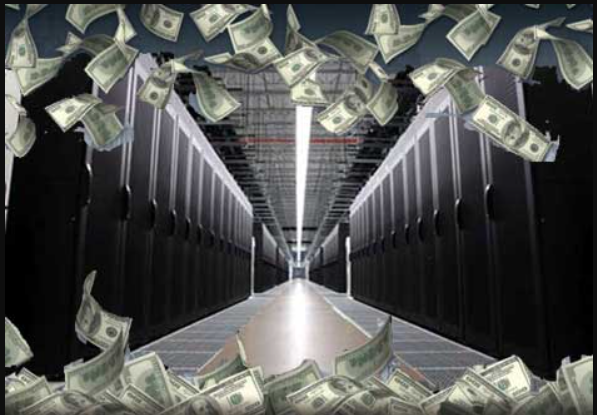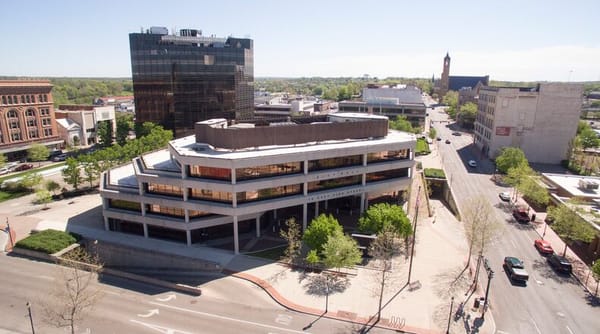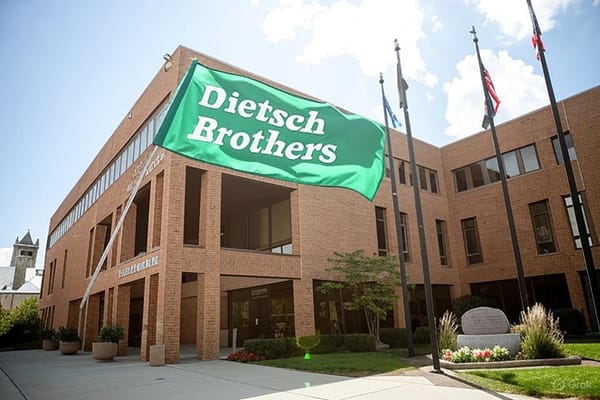Massive Data Centers Provided (Further) Massive Tax Breaks

By Nick Rogers
STATEWIDE - For over a decade, Ohio has steadily lured Big Data centers to the state for job creation and economic growth purposes. At a time when the likes of AEP and PJM warn of growing electric grid strain resulting from the massive amounts of energy consumed by these data centers (and other factors), a previously unnoticed sales tax loophole will save the likes of Google and Amazon millions of dollars while starving the state of revenue and potentially leading to higher consumer costs.
In 2013, Ohio added Section 122.175 to its revised code, the Tax exemption for sale, storage, use, or other consumption of computer data center equipment. In plain terms, the goal was to lure the burgeoning AI-data center industry to a state previously known for its manufacturing and agriculture.
With over $10 billion added to Ohio’s GDP in 2023 and $11.8 billion added in 2024, the 2013 plan seems to be succeeding at its main goals. However, language in the law such as “To generate, transform, transmit, distribute, or manage electricity necessary to operate the tangible personal property used or to be used in conducting a computer data center business” has opened the door for industry giants to exploit the law.
The word “generate” is of particular importance. Data centers have now begun building their own on-site natural gas plants meaning, per Department of Taxation approval on a site-by-site basis, a 5.75% sales tax exemption can apply to the building of and investment in both the data centers themselves and the natural gas plants on site.
State estimates show that Ohio will lose $127 million in tax revenue this year from data center exemptions (this number does not include tax breaks for the on-site natural gas plants). Those additional exemptions could cost the state tens of millions more.
Six new requests have surfaced on the desks of the Ohio Siting board in 2025 for permits to build on-site natural gas plants. These sites include the 1600 megawatt AlphaStruxure Millersport in Fairfield County, the Bluegrass Power Generation Facility in Fayette County, and the PowerConneX II in New Albany (New Albany is home to multiple data centers).
This comes on the heels of Governor Mike DeWine’s $60 billion “flat income tax” budget which will fully roll out over the next two years. The budget – which includes 600 million tax payer dollars for the Browns’ new stadium – lowers tax rates for those making over $100K a year and creates a flat 2.75% tax for everyone else.
In June, Ohio republicans attempted to make major amendments to DeWine’s proposal, notably including the abolition of data center tax breaks. DeWine swiftly vetoed the vote, citing a need to commit to the plan of making Ohio one of the nation’s top data center destinations.
DeWine spokesman Dan Tierney said that the tax breaks are a vital part of not scaring off tech giants and their desire to build here, noting that other states offer similar credits.
Said Tierney, “So the bottom line is, if you’re not going to support any piece of this, it’s going to undermine the state’s ability to compete for these projects.”
Regarding the 2013 loophole, Republican Roy Klopfenstein – sponsor of House Bill 15 which includes a major provision to end the “Legacy Generation Rider” which propped up to unprofitably coal plants with taxpayer dollars (one of the biggest controversies at issue in the infamous House Bill 6 scandal) – said he had no idea about the loophole.
“I was unaware of this. I don’t think it was ever brought up,” Klopfenstein said.
Whether or not these “new” tax breaks will end up raising average consumer bills across the Ohio board is yet to be seen but, given PUCO’s history of granting proposed rate increases, the outlook isn’t bright for Ohioans.
And it doesn’t end at state sales and/or income tax benefits for the tech behemoths. Local tax abatements have routinely been granted, such as that agreed upon between Microsoft and the New Albany City Council. A 15 year, 100% property tax abatement was granted to the company for their proposed $420 million facility. For the icing on the cake, the Tax Credit Authority granted Microsoft a 15 year 100% sales tax exemption in exchange for promising the creation of 20 jobs. That’s right. 20 jobs.
According to the Ohio Chamber of Commerce Research Foundation, 95,000 jobs were “supported” by Ohio’s data center industry in 2024, including 37,000 direct data center positions. According to Axios, however, only 11,791 data industry jobs were held during that time (they reference census data for their numbers, and this is far less than 1% of total Ohio jobs). The Data Center Coalition says that for every data center industry job, six others are “supported” somewhere else in the U.S. economy.
More GDP, more jobs (how many depends on who you ask), and a lot of lost tax revenue. The benefit or blight of Ohio data centers lies in the eye of the beholder (and we haven’t even addressed the water consumption/contamination issue; perhaps in a later TOR piece). The ball is rolling, and the long-term risk/reward scenario has yet to play out. As of now, Big Tech appears to be benefiting most of all. Don’t they always?




